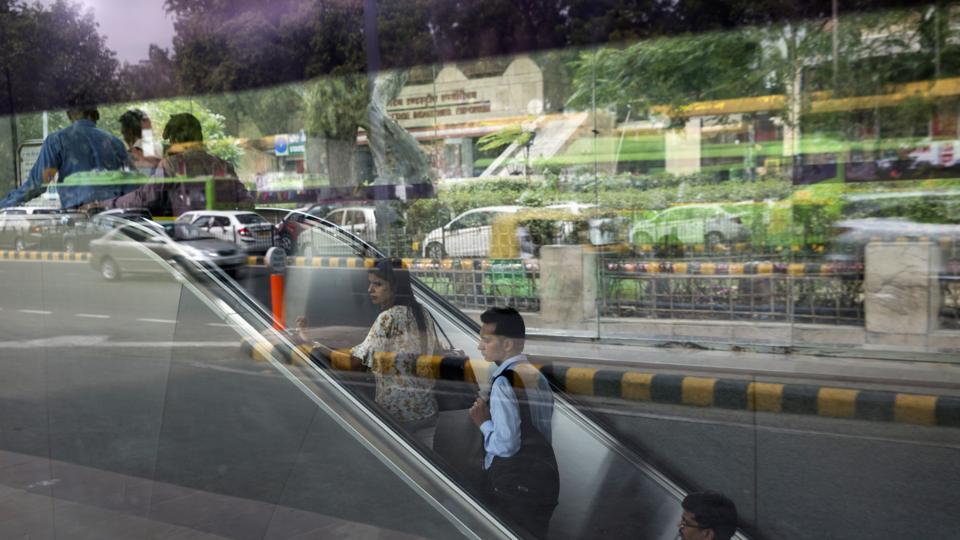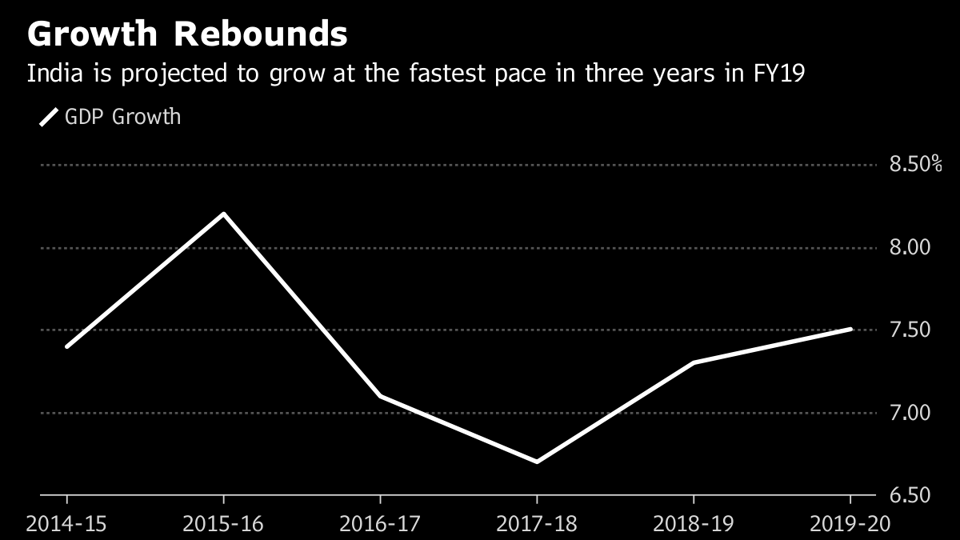
After a shock cash ban in late 2016 and a disruptive nationwide sales tax last year, India’s economy is once again gaining momentum.
India is on track to hold its position as one of the world’s fastest-growing economies as reforms start to pay off, according to the International Monetary Fund.
The $2.6 trillion economy was described by Ranil Salgado, the IMF’s mission chief for India, as an elephant starting to run, with growth forecast at 7.3 percent in the fiscal year through March 2019 and 7.5 percent in the year after that. The nation accounts for about 15 percent of global growth, according to the Washington-based fund.
Key risks flagged by the IMF in its annual Article IV assessment of the economy include higher oil prices, tightening global financial conditions and tax revenue shortfalls. Authorities should take advantage of stronger growth to bring down debt levels, simplify the consumption tax system and continue to gradually tighten monetary policy, it said.
After a shock cash ban in late 2016 and a disruptive nationwide sales tax last year, India’s economy is once again gaining momentum. Growth reached the fastest pace in seven quarters in January through March, and high frequency indicators from purchasing managers’ surveys to auto sales data show the economy is likely to grow above 7 percent.

The government is due to release gross domestic product data on August 31 for the three months ended June. A high growth rate may not necessarily resonate with voters in elections next year as they continue to face issues such as unemployment and farm distress.
There are other risks. The rupee has plunged 7 percent against the dollar this year, the worst performer among major Asian currencies, threatening the inflation outlook. The Reserve Bank of India delivered its second straight interest rate hike last week as policy makers seek to maintain economic stability against a global backdrop of trade tensions and high oil prices.
Continuing structural reforms would be key to high growth, Salgado said in a conference call. Further rationalization of the goods and services tax would give maximum benefits, and labour reforms would be an incentive for companies to expand, he added.
Other key points from the report:
Recovery is underway led by an investment pickup External vulnerabilities remain contained, but have risen India’s export market share remains low; need to boost competitiveness There’s need for maintaining exchange rate flexibility FX intervention should be two-way and limited to disorderly market conditions Government debt and budget deficit key macroeconomic challenges Need labor, land and product market reforms for jobs growth More needs to be done to ensure health of state-run lenders.



